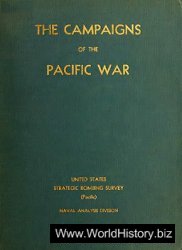Though production and exchange of commodities on a local and regional basis was an enduring feature, Wales was never isolated from wider British and continental exchange networks. The continental origins and nature of the objects In the Parc-y-Meirch (Savory 1976b) and Llyn Fawr hoards - weaponry, equestrian and feasting equipment and items of personal hygiene - indicate that the Welsh LBA/EPRIA aristocracy were as conscious of what was de rigueur as their counterparts elsewhere In Britain and Ireland. Maritime links via the Atlantic routes are vouched for by the unique sherd in so-called ‘Braubach’ style from Merthyr Mawr Warren (Glam.) (Savory 1976b), similar to stamp-ornamented Armorican imports of the fifth century BC from Cam Euny, Cornwall (Christie 1978: figure 34.4). Metalwork in early La Tene (ELT) style, of which the most common examples are Marzabotto-type fibulae (Figure 35.7b, c), is rare in Wales, but no fewer than three brooches come from Merthyr Mawr. This concentration, coupled with the evidence for metalworking, suggests that the Ogmore estuary was perhaps of significance in articulating these Atlantic contacts. Savory (1990) has suggested that the Osismi of western Brittany may have had a role in spreading metalwork and a little pottery to south Wales, citing a pot from Bacon Hole (Glam.) (Savory 1976b), a mould from Worm’s Head (Glam.) (Savory 1974), the Clynnog (Caerns.) collar (Savory 1976b) and the La Tene I or II bracelets from Coygan Camp (Figure 35.7a). Though the direct importation of larger items of metalwork was uncommon, the Cerrig-y-drudion ‘bowl’, one of the finest pieces of Celtic art found in Britain, and recently reconstructed as a lid (Stead 1982), may be an exception. In the middle La Tene continental links waned, to re-emerge In a small way In La Tene III, though the imported prestige Items found in southern England are absent. Whereas imports may have been necessary to sustain the expansive economies of southern England they may have been an irrelevance amongst the highly fragmented societies of the west (Nash 1984). Yet the peripheral zone to which Wales belonged was a source of mineral wealth which may, in part, have helped sustain the dynamic economies of the core - continental as well as British. In this context first-century BC Gaulish coins, of a type widely distributed in northern and western France, from Merthyr Mawr, Caerwent and Weston-under-Penyard, and an issue of the Coriosolites found in an iron mine at Scowles, Lydney (Glos.) (Boon 1980b), may indicate that Gaulish intermediaries were seeking metal sources. Indeed it is not impossible that the Porth-Felen lead anchor-stock (Boon 1977), typologically of second - to first-century BC date, may be a relic of a shipwreck linked to classical sources pertaining to the exploration of western sea-routes in connection with a search for metals c.90-70 BC (Strabo 111.5.11).




 World History
World History









